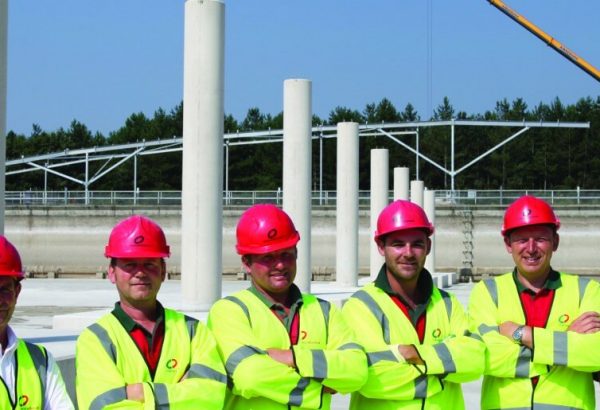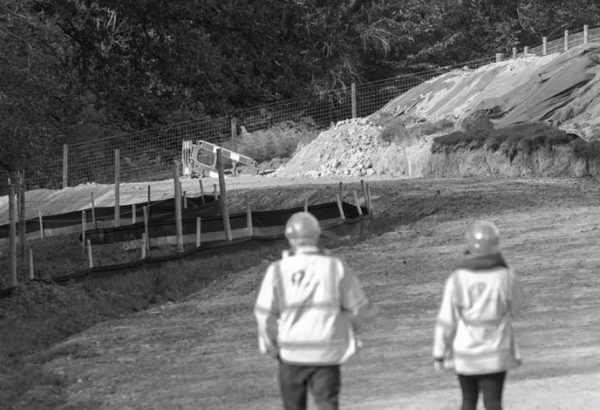
Can the water industry deliver net zero by 2030?
Civil EngineeringBy Matt Cannon, Chief Executive
Can the water industry deliver net zero by 2030? As we all dig deep during the age of COVID-19 and as climate change accelerates, the answer must be a resounding yes.
The 10 point climate plan from the Prime Minister last in November provides the broad direction of travel for our wider economy. But how does the water sector get there? At the start of December Water UK unveiled the industry’s routemap to targeting zero net operational emissions by 2030. It’s an ambitious strategy and delivery of this goal twenty years before the UK’s binding net zero target would undoubtedly set the bar for other infrastructure, utility and energy-intensive industries.
2030 is also a commitment that Clancy shares. Our own route to this target is based on four pathways: improving efficiency, addressing consumption, using lower-carbon products and services and finally offsetting or storing away emissions that cannot be avoided.
The strategic vision is so easy to say isn’t it? But how do we make it live beyond what increasingly might be seen as well-worn corporate mantras? The reality for us all is that plotting our route to 2030 is full of unknowns because some technologies that we require are not available at scale.
However, many behavioural, attitudinal and operational changes to prepare for net zero contracting can start now. So, as we all consider our organisations’ journey to net zero, here are five areas for our sector that I want to make sure are not lost in the collective journey.
We all need to foster a local net zero skills legacy. The transition and delivery of net zero requires an approach which trains and upskill people for a net zero economy. ‘Levelling up’ is perhaps not all about tackling a north / south divide but also needs to be about a redistribution of skills and knowledge across other regions. This should be about embedding the local in net zero delivery.
A key focus of net zero delivery for water companies needs to be on how they work with their contracting supply chain to deliver the social and economic benefits as well as the environmental outcomes. The aim in my view is to put in place where possible operational structures that mean that contracts are delivered by building capacity and skills in localities rather than relying on resources – people and plant – travelling on carbon intensive journeys.
Next, we need to prioritise forward-planned renewal and investment rather than reactive repair. This is the holy grail of better efficiency. For repair contracts this will give us much greater control of resource scheduling and deliver the best opportunity to track and reduce emissions.
The next step for all of us to become technology enabled and data obsessed. Investment in technology is already yielding benefits. But there is scope for more adaptation. Technology can be harnessed to aggregate data, enable informed decision making, measure performance against benchmarks, and establish best value asset solutions. Data harvesting is key. But without the ability to translate this into information it’s impossible to set a baseline on which to deliver environmental targets, or work collaboratively with a supply chain to improve performance.
That’s aligned with the next point. We all need to Innovate with our supply chains. There is a lot of work needed to design, manufacture and implement the necessary infrastructure to support electric vehicles and plant at the scale and with the flexibility and efficiency needed by construction. Put in simple terms, there is no electric product on the market at the moment that is both affordable and efficient enough which would deliver on the aims of net-zero. This is not a reason to sit back.
Innovation occurs at any level in a supply chain and all too infrequently it’s not recognised below tier one. The aim should be to facilitate a culture of knowledge sharing, collaborative learning and continuous improvement.
Are we on track for 2030? The fifth and final point requires clients, contractors and supply chains to consistently out-perform environmental programme targets. We need to go ‘above and beyond’ as a standard. That’s a significant cultural and behavioural shift for a construction industry that has a habit of accepting mediocre performance; often because the data hasn’t been assembled to prove it. We need to be informed and through this be able to set challenging but deliverable targets and measure performance over long term frameworks.
Net zero delivery will require an industry step change on an unprecedented scale – this needs to operational, informational and behavioural. We need to embrace the opportunity to do things differently. A new way of working is needed to make the net zero transition and deliver the 2030 target.




